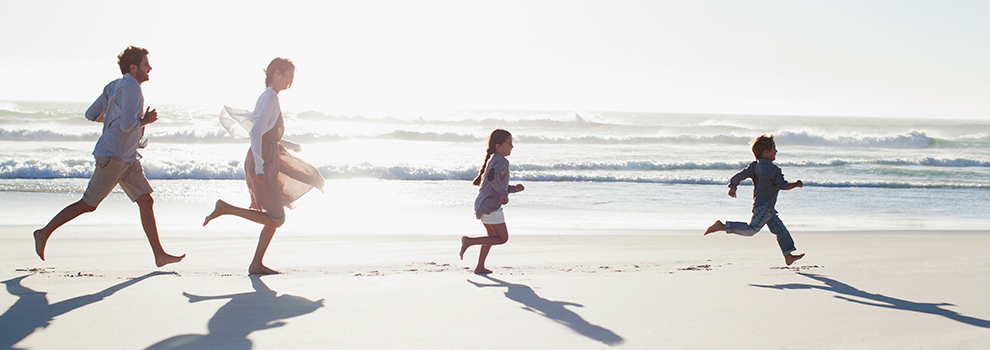
What Is a Sunburn?
Sunburns are a skin reaction that occurs when there is damage to the skin from ultraviolet (UV) light exposure that can range from painless redness and swelling to blister formation. UV light can be subdivided into three wavelengths: UVA, UVB, and UVC. Only UVA and UVB are associated with skin damage, skin cancer, and sunburns. Most sunburns are first degree burns with development of an associated skin redness or pinkness occurring about 3-5 hours after exposure to UVB rays and reach a maximum intensity about 12-24 hours after exposure.
Symptoms of Sunburns?
The skin may be painful and warm to touch after the injury has occurred and redness should fade about 72 hours after. Yet, there are times that more severe burns can occur with development of skin blisters, which may be very painful after the blisters rupture. The development of blisters are a sign of a second degree burn. Children with fair or freckled skin, blonde or red hair, as well as light eyes are known to be more sensitive to UV light and sunburn more easily that children with dark skin; however, children with dark skin can still develop sunburns as well as other issues related to sun exposure (i.e. skin cancer and cataracts).
How to Care for Sunburns?
First Degree Sunburns:
- For mild sunburn these injuries can be managed at home as long as the child does not have other symptoms such as fever, chills, headache, or “not feeling well,” which should prompt a phone call to your pediatrician’s office.
- Mild sunburn can be managed with cool wash cloths or bathing the child in cool water. May also apply aloe vera-based gels to the areas that are effected.
- Pain from mild sunburns can be managed with ibuprofen or acetaminophen.
Second Degree Sunburns:
- In cases of severe sunburn, the child may develop blisters and these are a sign of a second degree burn. If this occurs, you should call your pediatrician or take the child to an urgent care/emergency room since second degree burns need specialized care by a physician.
- There are times when children can become dehydrated or even faint from extensive or severe sunburns, which could be signs of more serious heat related injuries. For this reason, children with large areas of sunburn, blisters, or any other symptoms, should be promptly evaluated by a pediatrician or an emergency room physician.
Prevention
- Babies less than six months of age should be kept out of the sun per recommendations of the American Academy of Pediatrics.
- Children should stay out of the sun as much as possible, especially from 10:00 am till 4:00 pm, since the sun is often the strongest during this time period.
- Sunburn prevention begins with wearing protective clothing (i.e. wide brim hats, loose fitting, tightly woven clothing, and those with sun protective fabric), sunglasses with UV protection, and sunscreen.
- Apply a sunscreen with a sun protection factor (SPF) of 30 or higher. We often recommend the use of a SPF > 50 that has “broad spectrum” protection from both UVA and UVB rays.
- Kid-friendly sunscreen should be used because children’s skin may be irritated by chemicals in adult sunscreens. For this reason, avoid sunscreens with chemicals such as para-aminobenzoic acid (PABA) and benzephenones; on the other hand, chemicals such as titanium dioxide and zinc oxide tend to irritate children’s skin much less.
- Sunscreen should be generously applied to all areas of the body that will be exposed to sunlight 15 to 30 minutes before going out in the sun.
- A lip balm with a SPF of 30 or higher should be used to protect children’s lips.
- Sunscreen should be re-applied every 2-3 hours while out in the sun and especially if the children are sweating a lot or swimming.
- There are “water-proof” sunscreens on the market that can be used for children that are going to be swimming and out in the sun for prolonged periods of time; however, none of these sunscreens are truly “water-proof” and should be applied regularly after children go swimming.

Contact Us
To contact Children's Memorial Hermann Hospital, please fill out the form below.